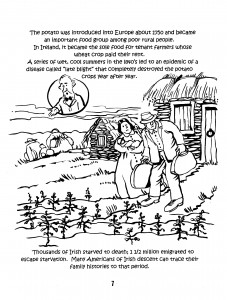One of the reason that I am interested in plant diseases is that the microbes causing these diseases can have a huge effect on humankind. It also gives me some satisfaction that with a plant pathology degree and my innate curious nature, I can “hopefully” make contributions to stop or manage some of the plant disease problems that can detrimentally affect humans.
Recently, I came across a news report which mentions a slump in Indonesian cocoa exports in part due to a disease called Vascular-Streak dieback. That report also noted that Indonesia was the 3rd largest cocoa producer in the world. This made me wonder when cocoa prices are going to increase. Then it hit me – Here I am, 1/2 a world away and wondering if some problem on the other side of the world is going to impact my wallet. Wow. That is what a microscopic fungal pathogen can do. Some might argue that with our human advances in long distance travel contributing to a global economy is making this a big problem. They would be correct… and these advances also contribute to the easier dissemination of potential pathogens (that is a topic for another blog post some day).
Plant diseases and their impact on society and the world did not appear recently. In fact, plant diseases has impacted olden civilizations such as the Roman empire which had to deal with a rust disease (cause by a fungal agent) by appeasing the gods, Robigo and Robigus (side note – the Romans did not know that they were dealing with a plant disease!).
Then in the mid-1800s, a disease called “late-blight” (causes by Phytophthora infestans) destroyed the potato crop in Ireland and resulted in death, hard-times and emigration of many Irish to America. This was all before the era of airplanes. Such is the impact of plant diseases. Fascination with this history and prospects on future outbreaks is why I am a PLANT PATHOLOGIST.
To find our more about plant disease in history, I would suggest downloading the FREE “coloring” book – Plant Pathology: past to present from the American Phytopathological Society website site (click here). It is a fun way to learn a little of where and how plant diseases crossed paths with humans.



